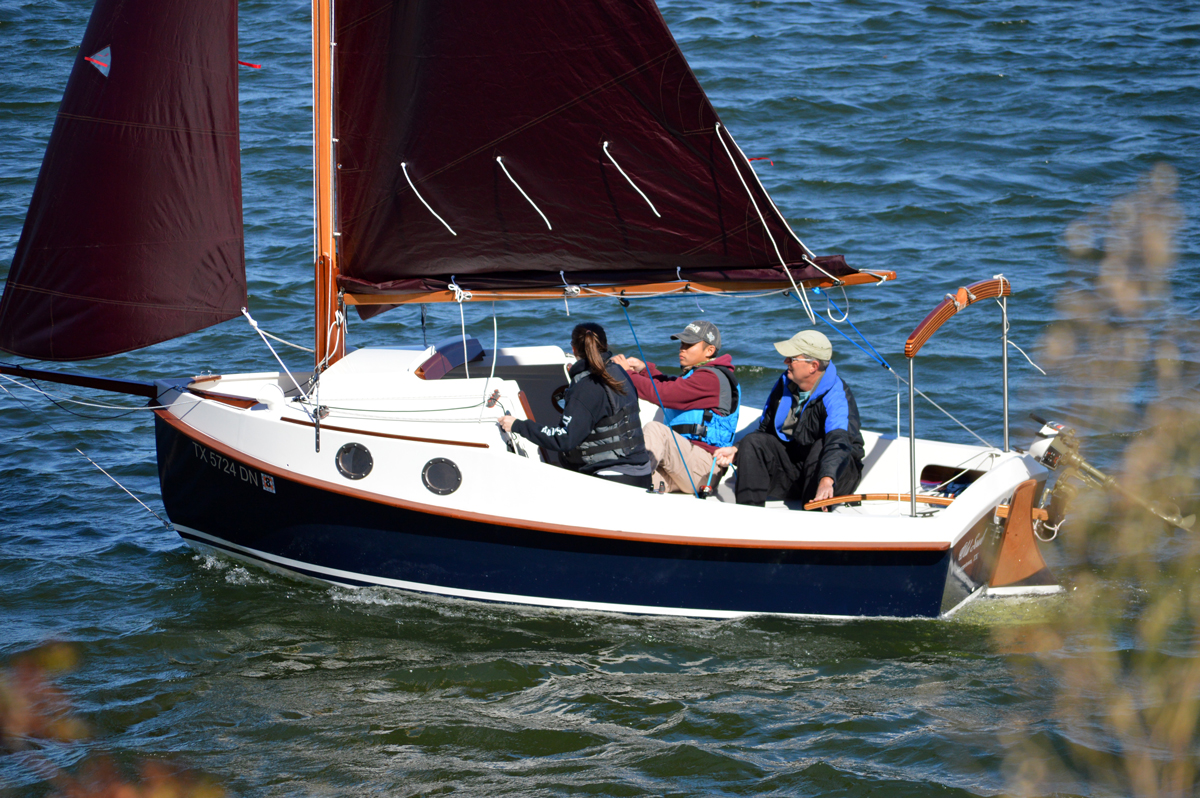I started fiberglassing the hull bottom at 1 a.m. so it would be as cool as possible in the garage. Didn't finish the first coat of epoxy until around 5:30, by which time I was totally exhausted.
It is best to epoxy the hull bottom and side panels all during the same session to get the best chemical bonding between the bottom and side panels. The bottom is covered with two sheets of fiberglass cloth that overlap in the middle of the hull and over the keel. I laid both these two sheets in place (sorry, no pictures), then laid the overlapping sheet back so I could epoxy the first sheet in place. After applying epoxy to the first sheet, I then tried to lay the overlapping sheet back over it, but had great difficulty getting it laid out properly because the lower sheet was very sticky. I worked on this a very long time and got it the best I could, but I still had some ripples which will have to be sanded off and patched after the epoxy cures. At that point I decided it would be impossible to add the side panels and get them aligned properly without help. I wasn't going to go looking for help at 5:30 a.m., so decided to wait and do the side panels after the bottom was cured and sanded.
Below is the bottom epoxied, and sanded where the side panels will be glued. I have taped the over 15'-long side panels in place with an approximately 6" overlap. After I have enough epoxy on the side panels I can then cut the overlap to 3" and remove the taped section. (Trying to remove the tape from the fiberglass cloth itself would be a huge mess and probably mis-align the cloth.)
 |
| Hull Bottom Epoxied, Side Panels Fiberglass Taped in Place |
|
Here the side panels have been epoxied in place. I still ended up with a few ripples, which, again, will have to be sanded out and patched.
 |
| Hull Bottom and Side Panels Epoxied |
 |
| Side Panels and Bottom Sanded, Rubstrips Started |
In
the above shot you can see that the entire bottom and side panels have
had
their initial sanding. I am also adding rubstrips to the bow and keel
noseblock, the two areas most likely to run into underwater debris. At
this point I have glued on two layers of dynel cloth with epoxy.
The next step is to add a layer of epoxy thickened with graphite. The
graphite will make the surface extra strong and slippery. That, along
with the dynel cloth should do a very good job of protecting those two
areas. In the below shots, I have added the next layer of epoxy mixed with graphite.
 |
| Bow Rubstrup with Graphite/Epoxy Layer |
 |
| Noseblock Rubstrip with Graphite/Epoxy Layer |
I will do quite a bit of sanding and smoothing on the rubstrips. I don't want to sand into the cloth, though, so any deep indentations will be filled later with fairing compound.






No comments:
Post a Comment